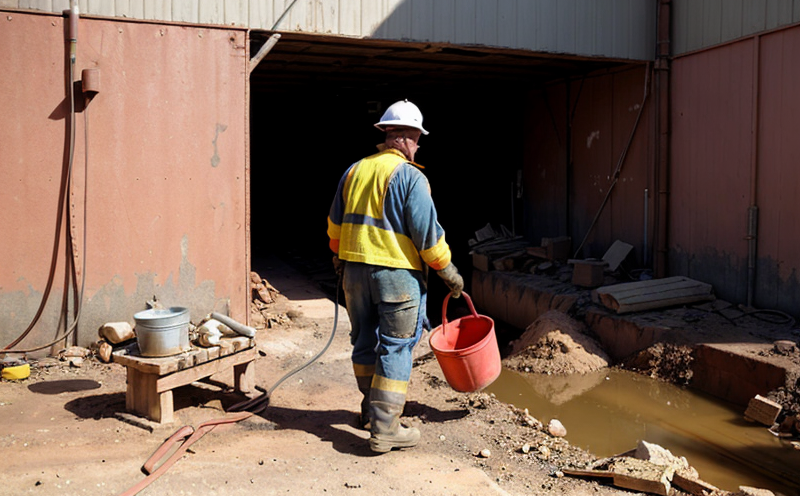DIN 19432 Radon Gas Safety Assessment in Mines Testing
The DIN 19432 standard is a crucial guideline for assessing radon gas levels within mining operations. Radon, a colorless and odorless radioactive gas, poses significant health risks to miners who are exposed over prolonged periods. This service ensures compliance with international safety standards, providing peace of mind and protecting the well-being of workers.
The process involves several critical steps: initial sampling, data analysis, and reporting. Samples are taken from various points within the mine using specialized equipment designed for confined spaces. The specimens undergo rigorous testing to measure radon concentration levels accurately. Compliance with DIN 19432 is mandatory in countries adhering to European standards.
Testing conducted under this standard helps identify potential risks and implement necessary safety measures promptly. It ensures that mining environments meet stringent health and safety regulations, enhancing occupational health significantly. The service also includes training sessions for miners on recognizing symptoms of radon exposure and the importance of adherence to safety protocols.
The DIN 19432 protocol emphasizes continuous monitoring rather than occasional checks. This approach allows mines to stay ahead of potential dangers, ensuring a safer working environment for all employees. Regular assessments contribute to better decision-making processes regarding ventilation systems and other preventive measures.
Furthermore, this testing helps in maintaining compliance with relevant international standards such as ISO 14001:2015 on environmental management systems, which includes aspects related to occupational health and safety. By adhering strictly to these guidelines, mines can demonstrate their commitment to sustainability and corporate social responsibility.
Understanding the implications of radon exposure is essential for stakeholders across different sectors including mining, construction, and healthcare. Radon can cause lung cancer if inhaled over extended periods; therefore, proactive measures are vital. The DIN 19432 testing service plays a pivotal role in mitigating these risks effectively.
Compliance with this standard is not just about meeting regulatory requirements but also about fostering a culture of safety and responsibility within the organization. It encourages continuous improvement by providing actionable insights into areas that need attention. This proactive stance can lead to reduced absenteeism due to illness, lower worker turnover rates, and improved overall productivity.
For those involved in mining activities, understanding how radon affects health is crucial. The DIN 19432 testing service offers valuable information on best practices for reducing risks associated with this gas. By implementing these recommendations, mines can create safer working conditions while contributing positively to public health.
International Acceptance and Recognition
- DIN 19432 is widely accepted across Europe as a benchmark for radon safety standards in mining.
- The standard is recognized by numerous international organizations including the European Committee for Standardization (CEN).
- It has been adopted by several countries within the EU, ensuring uniformity and consistency in approach.
Why It Matters
Radon gas is a naturally occurring radioactive gas that originates from the decay of uranium found in rocks and soil. Its presence in mines poses serious health risks to workers, primarily through lung cancer development if exposed over long periods.
The DIN 19432 testing service plays an essential role in mitigating these risks by providing accurate measurements of radon concentrations within mining environments. This information is vital for ensuring compliance with local and international regulations aimed at safeguarding worker health.
Accurate monitoring allows mines to take timely action, such as improving ventilation systems or implementing other safety protocols, thereby reducing the likelihood of adverse health effects among employees. Additionally, regular testing fosters a culture of continuous improvement within mining operations, encouraging proactive measures against potential hazards.
The importance of this service cannot be overstated given its direct impact on worker well-being and overall mine productivity. By adhering to DIN 19432 standards, mines demonstrate their commitment to occupational health and safety, which is critical for maintaining good relations with stakeholders.
Environmental and Sustainability Contributions
- The service contributes to reducing the environmental footprint of mining operations by promoting safer working conditions.
- Improved health outcomes among workers lead to increased productivity, benefiting both employees and the environment indirectly.
- By ensuring compliance with DIN 19432 standards, mines support broader efforts towards sustainable development goals set forth by global bodies like the United Nations.





